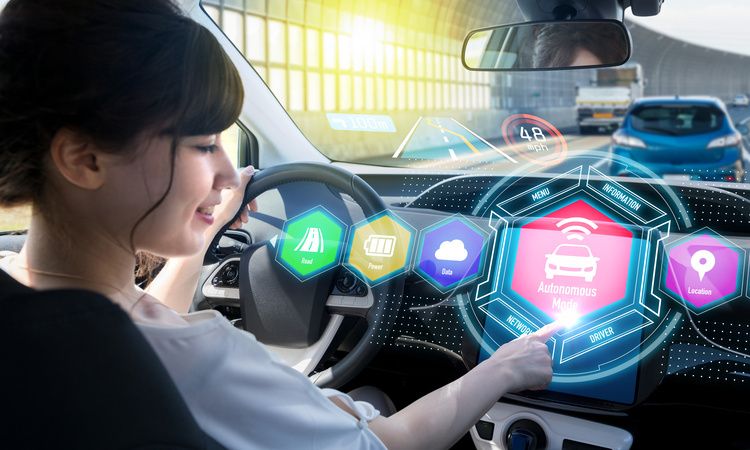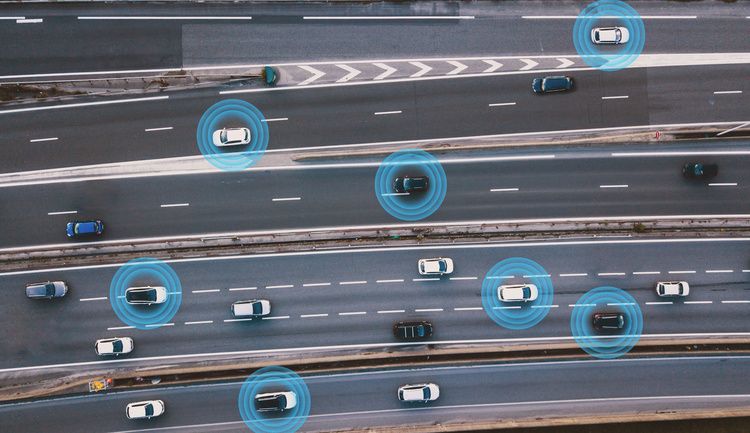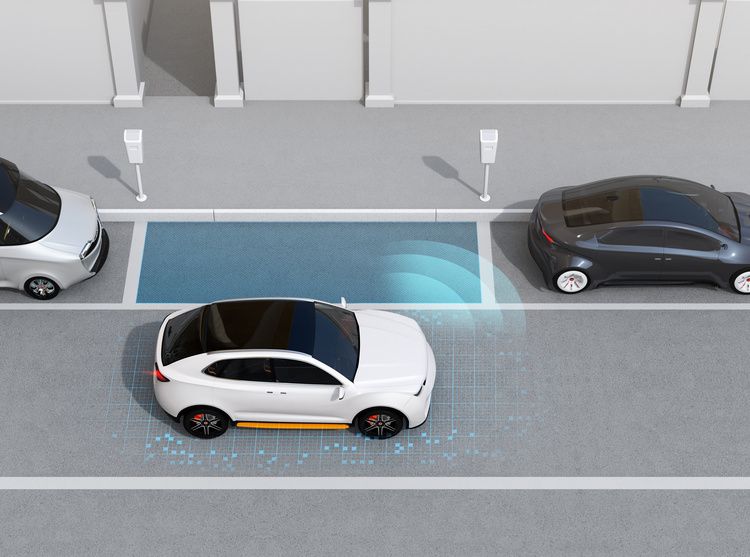Pros and Cons of Connected Cars - From the Driver’s Perspective

We all have our dream cars and for many of us, we just want the latest, most technologically advanced model from the world's most reliable car manufacturers. A connected vehicle is as modern and technologically advanced as it gets. But what does it mean to drive a connected car anyway?
First Things First: What is a Connected Car and How Does it Work?
A connected car is a vehicle that can connect to and communicate with compatible devices through a wireless network. It is an example of IoT or "Internet of Things" technology, which is a system of interrelated or interconnected mechanical and digital devices and everyday objects. These interconnected devices can access and transfer data to each other through the internet without human intervention, to make things easier and convenient for the users.
One of the main use cases for connected cars is safety, through fast vehicle-to-roadside and vehicle-to-vehicle communications. Connected entertainment is another use case, among others.
What Can Connected Cars Do?
Connected vehicles can assist drivers with a broad range of functions and functionalities. Aside from being able to connect with other devices, receive and send data ; connected vehicles can also update their software and firmware “Over-The-Air”, access online apps and services, and share Wi-Fi internet connection with passengers.
A car’s satellite navigation system can carry a traffic monitoring feature to alert you if your route has a hold-up or is congested. This feature takes it a step further by offering you an alternative route and avoid you being a traffic jam.
You can do a lot of things with a connected car by simply using an app on your smartphone. For example, you can whip out your phone and get your car's engine started even before reaching the garage or the parking lot. You can also remotely lock your car, honk the horn, or flash its lights.
A connected car can communicate with external and compatible devices such as your garage door or home devices.
When Does a Car Become a Connected Car?
Any car or vehicle equipped with internet connectivity can be referred to as a connected car. Car manufacturers use two kinds of systems in building connected cars: tethered system and embedded system.
- A car with a tethered system is equipped with hardware that can connect to your smartphone, while
- a car with an embedded system has a built-in antenna and is equipped with a chipset.
A connected car is equipped with a host of smart features that make your overall driving and ownership experience easier and more convenient. The advanced security features give an additional safety net outside of what typical seatbelts and airbags offer. These smart features include app-to-car connectivity, remote diagnosis, geo-fencing, remote parking, and entertainment features, among others.
Pros of Driving a Connected Car
There are a lot of benefits to driving a connected car, these are tied up with specific features.
Here are some of the advantages you get to enjoy:
Connect to Your Car Via Smartphone App
Connected car manufacturers don't just give your car a way to get network coverage. They have designed a dedicated app for your smartphone. The app serves as a bridge between your smartphone and your car, especially when it comes to remote functions. This is convenient since you can’t take your car with you everywhere.
As long as you have your smartphone with you, you can get your car to perform functions like locking or unlocking its doors, starting its engine, turning the climate control on, honking its horn, opening its sunroof, or turning on its headlights – even if you are still far from your vehicle.
The smartphone app will also give you access to your car’s security and entertainment features.
Set Up Geographical Boundaries Via Geo-Fencing
Geo-Fencing is an essential security feature for your car. It creates a boundary on a geographical map, indicating how far your car can be driven before setting off an alarm or triggering the notification system. So, once your car goes beyond this geographical boundary, you (as the owner) will receive an alert.
This feature is quite handy if you are worried about somebody else, like your teenage son, driving the car too far, outside the city limits, for example.
The geo-fencing feature can be set up on your smartphone app.

Any car or vehicle equipped with internet connectivity can be referred to as a connected car
Communicate with Other Connected Vehicles via V2V Technology
Vehicle-to-Vehicle or V2V technology allows your car to communicate with other connected vehicles. They can share vital information like road conditions, real-time traffic updates, and speed limits, among others. This technology is the basis of autonomous vehicles.
Access Online Entertainment Services
Car entertainment nowadays is typically confined to Bluetooth connectivity and FM radio. With a connected vehicle, you are connected to a wide range of pre-loaded entertainment apps and services. This includes music, internet radio, and video streaming services. As such, you can listen to songs on Spotify, have the kids watch their favorite shows on YouTube, and listen to radio news programs.
Needless to say, you will never get bored when you are in a connected car, whether you are on a long drive or just waiting at a car park.
Stress-Free Parking
High-end connected cars are equipped with sensors that allow them to do the parking for you. So, if you are not confident about your parallel parking skills or your ability to squeeze into a tight space, your car can do it for you – smoothly and quickly.
With a smartphone app or a smart key fob, you could get out of your vehicle and remotely park it to your desired spot.
Feel Safe with Your Car’s Security Features
Connected cars are equipped with essential security features that are very helpful during tricky situations. These features include emergency SOS calls during accidents, real-time location sharing or location tracking, roadside assistance in the event of a car breakdown, and remote diagnosis to help you determine what went wrong in case of a vehicle malfunction.
Remote diagnosis is a particularly powerful feature as it enables automakers to remotely monitor the health and condition of the vehicle. A report is regularly sent from the car to the automaker central monitoring system. In case an anomaly is detected, the automakers can then instantly inform the driver and take precautionary and safety measures through the release of security patches and updates “Over-The-Air”. Being able to take proactive solutions translates to savings from car repairs and maintenance.
Allow Your Car to Navigate via Smart Navigation System
Connected cars are equipped with a smart navigation system, which is integrated with a GPS or location-based services. For instance, if your vehicle has low fuel levels, it will prompt you to stop at a nearby gas refilling station, determining how far you are from it, and inputting it as your next destination on the navigation system.
If you are running late for a client meeting the travel time to your meeting venue is calculated, factor in real-time traffic situation and current weather condition, and recommend the best route to take.

High-end connected cars are equipped with sensors that allow them to do the parking for you.
Save on Energy Costs
Thanks to the traffic management, smart navigation, and security features, you will be able to avoid congested road traffic and reach your destination safely and quickly. This will make your driving experience a fuel- and cost-efficient one.
The connected cars’ features can make your driving experience far superior than traditional car’s and with OTA subscription, the possibilities seem now limitless. Car manufacturers like Tesla regularly release new features and improvements to keep the drivers satisfied with their car’s purchase and the support they get. New features can include streaming services, Karaoke, faster acceleration, better suspension, in-car gaming, and more.
Cons of Driving a Connected Car
Driving a connected car does have its share of disadvantages.
Complacent and Distracted Driving
Driving a connected or autonomous vehicle has many advantages, and this could lead to drivers no longer paying as much attention to the road and not focusing on the wheel and on other vehicles nearby. Getting used to connected cars could cultivate distracted and complacent driving. When the lack of focus has become a habit or when your reflexes are no longer as sharp as it used to, this could spell disaster once you go back to driving a traditional vehicle.
Expensive
Connected cars make use of several cutting-edge technologies in their features, so you can expect them to be expensive. After all, these technologies cost money – from the research and development phase, to creating the software and the app, to manufacturing the modified vehicle parts, to making the sensors, etc. However, if the market demand remains strong, we can expect the cost of connected cars to be reduced soon.
Hacking Risks
Having a car connected to a wireless network and sharing its data with other nearby devices and vehicles could make it prone to hacking. Once your car's systems are hacked, hackers can collect your personal data and gain information on your schedules, routines, and habits. They can also get hold of information stored in your other connected devices, such as your smartphone and laptop. Automakers and automotive software solution providers spend a considerable amount of their ressources to keep the vehicle as secured as possible. For example, a large international security company has co-jointly developed with Carota, a VSOC solution able to monitor and prevent from potential cybersecurity attacks. If a security risk or failure is detected, a patch will be then quickly deployed by the automaker through the “Over-The-Air” (OTA) technology prior the release of a firmware and software’s update.
